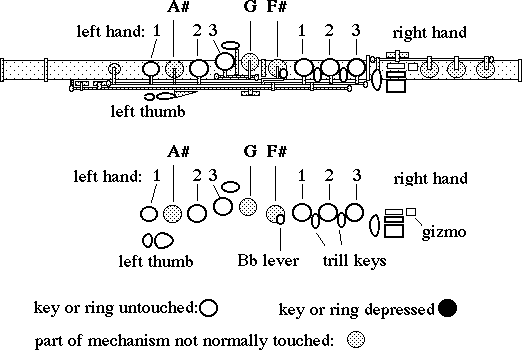Unconventional flute finger positions
In the diagram below, the keys that your fingers normally touch are white with a bold outline. The shaded keys are not touched in conventional fingerings, but you may use them for some alternate, microtonic and multiphonic fingerings.
The A# key lies between the '1' and '2' keys of the left hand.
The G key and the F# key lie between the LH3 key and the RH1 key.
On the interactive graphic for the virtual flute, these keys are normally grey and inactive. Clicking the box 'Allow unconventional finger positions' makes them coloured and clickable.
When you search for alternate, microtonic or multiphonic fingerings, the search will normally not return fingerings using the unconventional fingering positions. If you click the box, however, fingering possibilities including unconventional positions will be included.

Back to the virtual flute |

